How To Do The Hip Thrust
If you want glorious glutes, this is one exercise you can’t afford to skip
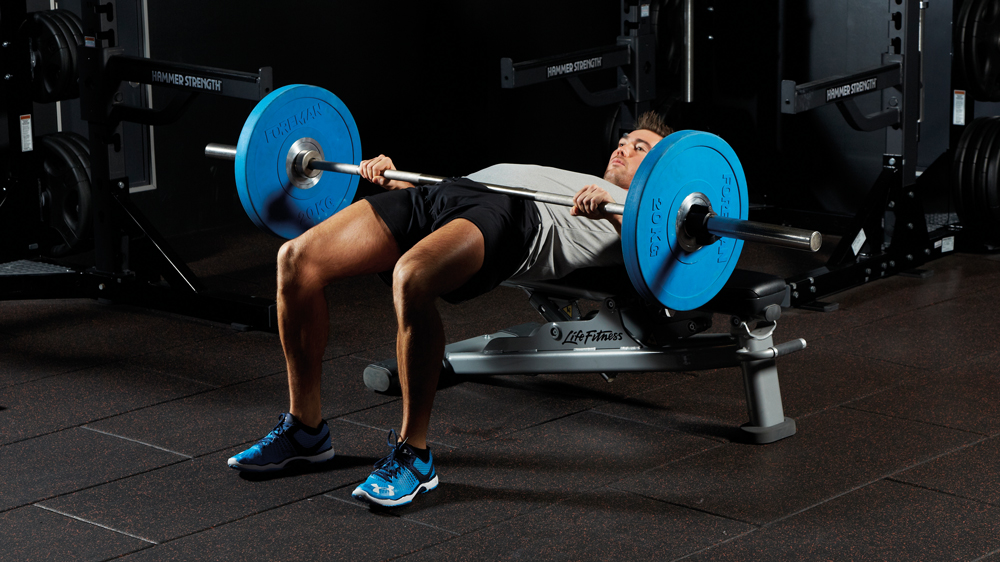
The best bodyweight exercise for building stronger glutes is the glute bridge, so it follows that the best weighted glute exercise involves a similar thrust of the hips.
That’s more or less what the hip thrust is, a glute bridge with weights, although you also raise your shoulders on a bench which makes your glutes take on more of the load.
If the hip thrust isn’t already part of your training plan, we suggest adding it in, sharpish. Here’s why and how, with expert advice from strength and conditioning coach Andrew Reay, who spoke to us on behalf of sports coach booking platform Sport Session.
Andrew Reay is an NSCA-accredited strength and conditioning coach, and the current head of sports and conditioning at physiotherapist chain Pure Sports Med. Reay is a former professional rugby player, with clubs including Harlequins and Bristol.
Hip Thrust Benefits
We’re firm believers that the hip thrust deserves a place in your weekly gym routine, not only because it’s a compound exercise that allows you to lift a lot of weight, but also because it holds the key to unlocking a plethora of strength and performance benefits.
It recruits the glutes primarily but also works your hamstrings, calves and lower back. Those are all key components of your posterior chain – the muscles that run along the back of your body and are responsible for backward force, and stabilising your spine and hips.
“It’s about filling in the gaps when it comes to strengthening the back of the body,” says Reay. “Outside of squats, lunges and step-ups, you need to think about how you’re challenging and developing your posterior chain. You have the deadlift for your hamstrings, but the hip thrust will work the glutes and the lower back specifically.”
Performing hip thrusts can also help you get out of the blocks quicker, which is especially beneficial if you play field sports.
Get the Coach Newsletter
Sign up for workout ideas, training advice, reviews of the latest gear and more.
“Hip thrusts and rack pulls are examples of hip extensions,” says Reay. “Hip extension is what propels you forward. The stronger you can be there, theoretically, the faster you’ll be able to accelerate. As you get up to your top speed when running, it becomes more hamstring-heavy, but generally, developing the glutes, hamstrings and posterior chain will get you moving quickly.”
Hip Thrust Vs Glute Bridge
These two exercises challenge the same muscles but change the emphasis because of the different set-ups. The raised shoulder position of the hip thrust is the key difference between the two moves. “A hip thrust will work your glutes and lower back harder,” says Reay. “The reason for that is you’ll get a little bit more hip flexion and knee bend due to the greater range of motion, which will take the hamstrings and calves out of the equation a little bit while relying on the glutes to do quite a lot more.”
Conversely, the position assumed during a glute bridge will require more input from your hamstrings and calves to thrust your hips upwards.
Hip Thrust Equipment
A stable, roughly knee-high platform is the first thing to secure, but before you co-opt a weights bench, look around your gym floor for a dedicated hip thrust bench. These will either be a padded trapezoid or an angled pad connected to a textured foot rest to stop your feet from slipping.
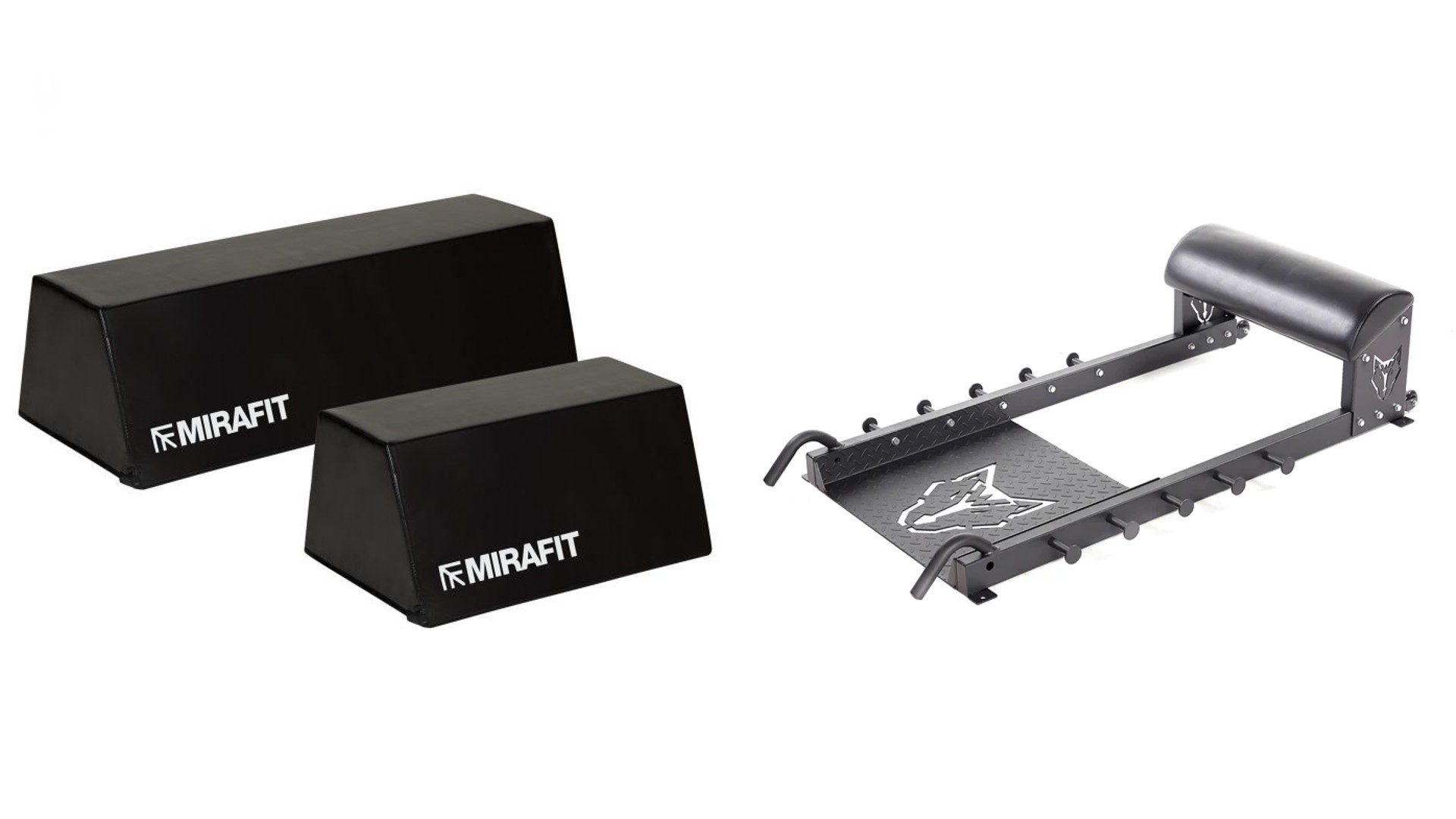
The second thing you’ll need is a free weight, although beginners can start with just their own bodyweight. Typically, the hip thrust is performed with a barbell because of its high weight ceiling, and your gym may also have barbell pads for comfort’s sake. A heavy dumbbell, kettlebell or weight plate will do the job, too.
How To Do The Hip Thrust
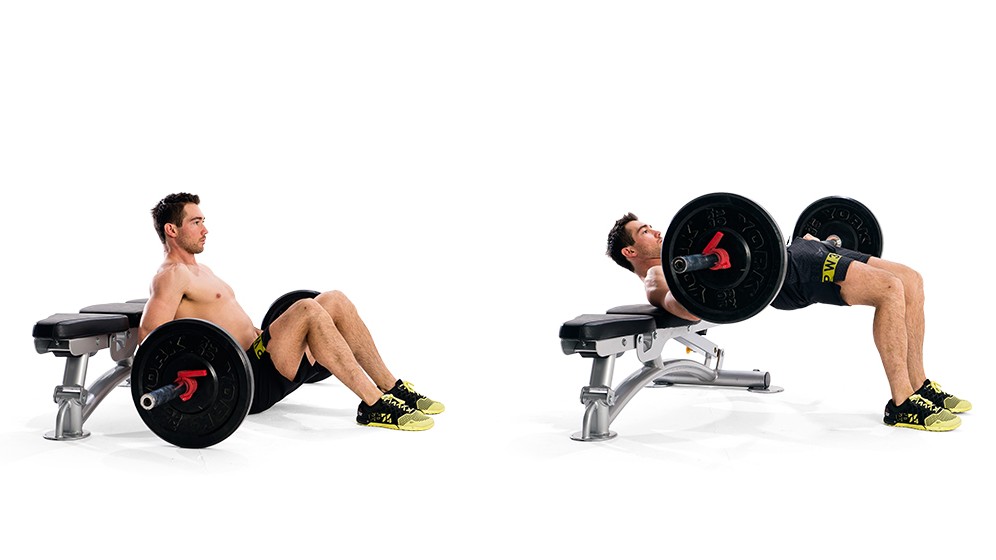
“Find a place for your barbell or box where you can be sure it’s going to stay there,” says Reay. After all, you don’t want to lean against your back support only for it to go sliding across the room.
“Sit on the floor, get the bar close and put the barbell pad on. Set yourself up so the mid-part of your back [just under the shoulder blades] is resting on the box or bench, then straighten your legs and roll the bar over your feet until it’s over your hips. Walk your feet in so they are resting flat on the floor.”
Drive through your feet to lift your hips and the barbell until your torso and thighs are parallel to the floor. Lower the bar under control.
Common Beginner Mistakes
While it’s a reasonably straightforward movement, there are some pitfalls to be aware of when trying the exercise for the first time.
Lower-back bias: “Many people will feel hip thrusts in their lower back a lot,” says Reay. “This is because they’ll go into an overextended position at the top of the lift, really arching their back.” Thankfully, there’s a simple tip to avoid this error. “Tuck your chin down to your chest. This keeps you in a position where you can’t overextend.”
Foot drive: It’s often advised to drive through your heels as you propel the bar upwards, but Reay suggests a slightly different strategy. “I suggest pushing up through the whole foot. As you return to the bottom of the lift, you will naturally fall back on to your heels. If you can, try to push through the whole foot as you come back up, driving through your laces. This will set your glutes up to do the bulk of the work.”
Hip Thrust Variations
Glute bridge
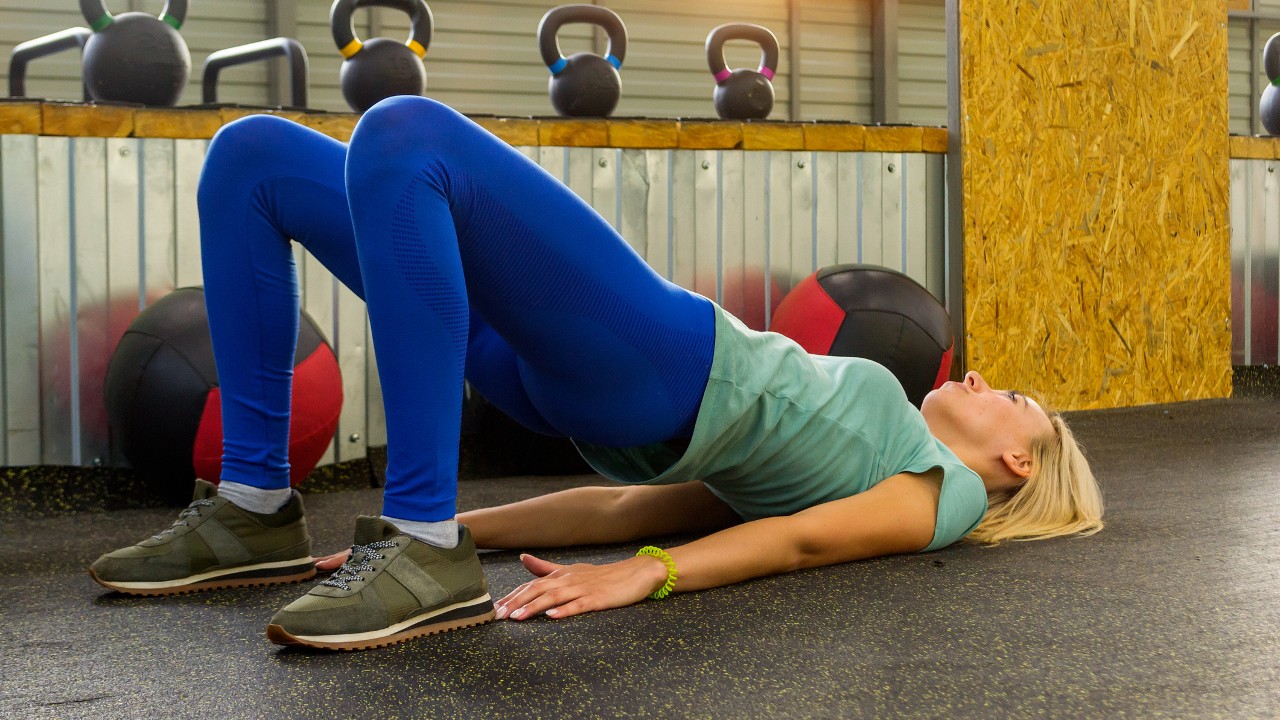
The glute bridge works the same muscles as the hip thrust but is unweighted, so it works both as a handy alternative when you don’t have access to equipment and as a stepping-stone exercise for those who need to build some strength and confidence before resting a barbell across their thighs.
Lie on your back with your arms by your sides, your knees bent and your feet planted on the ground. Squeeze your glutes, press through your heels and drive your hips up so you form a straight line from your knees to your shoulders. Hold for a second at the top of the move, then lower slowly.
Single-leg hip thrust
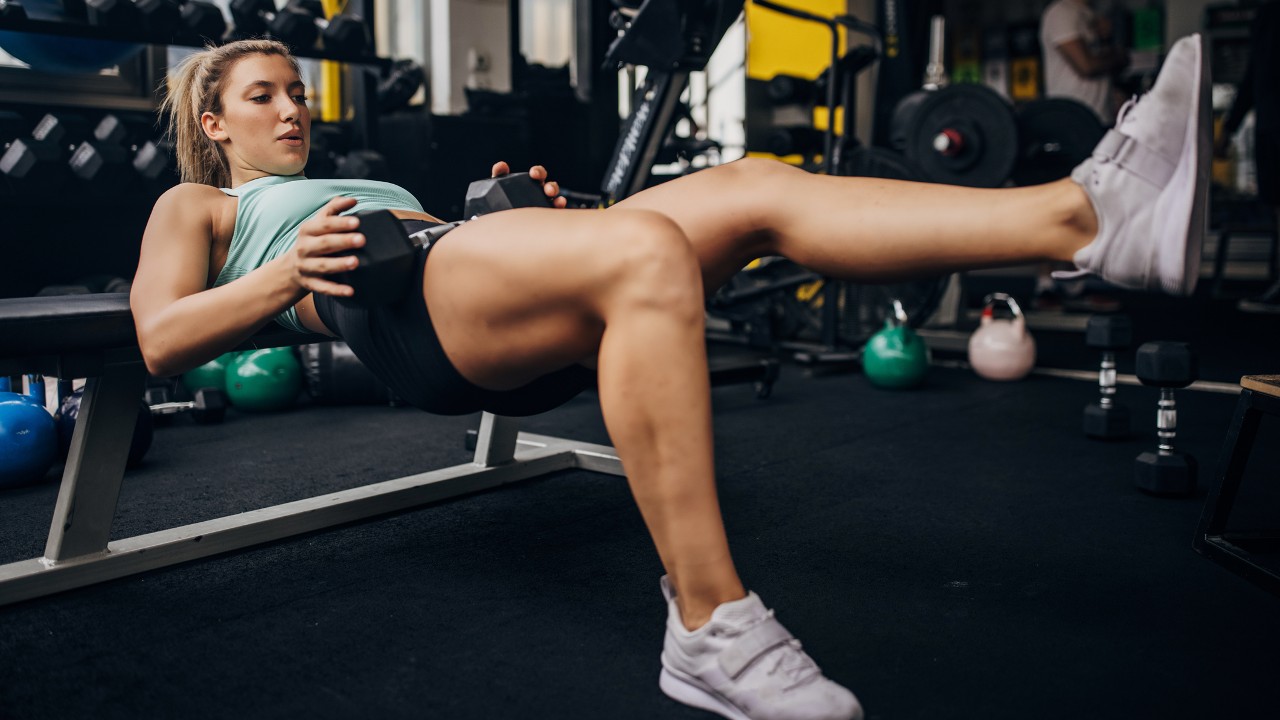
This is an advanced variation on the hip thrust so it’s best to try it without using any weights first, because the instability created by only having one foot planted on the ground can cause you to topple over. Set up for the hip thrust as normal but raise one foot off the ground, keeping the bend in your knee. Keep the leg elevated as you drive your hips up and come back down. This variation can help fix any strength imbalances in your body, as well as challenging your core to resist the rotation created by having one leg lifted.

Harry covers news, reviews and features for Coach, Fit&Well and Live Science. With over a decade of training experience, he has tried everything from powerlifting to gymnastics, cardio to CrossFit, all in a bid to find fun ways of building a healthy, functional body.
- Nick Harris-FrySenior writer









